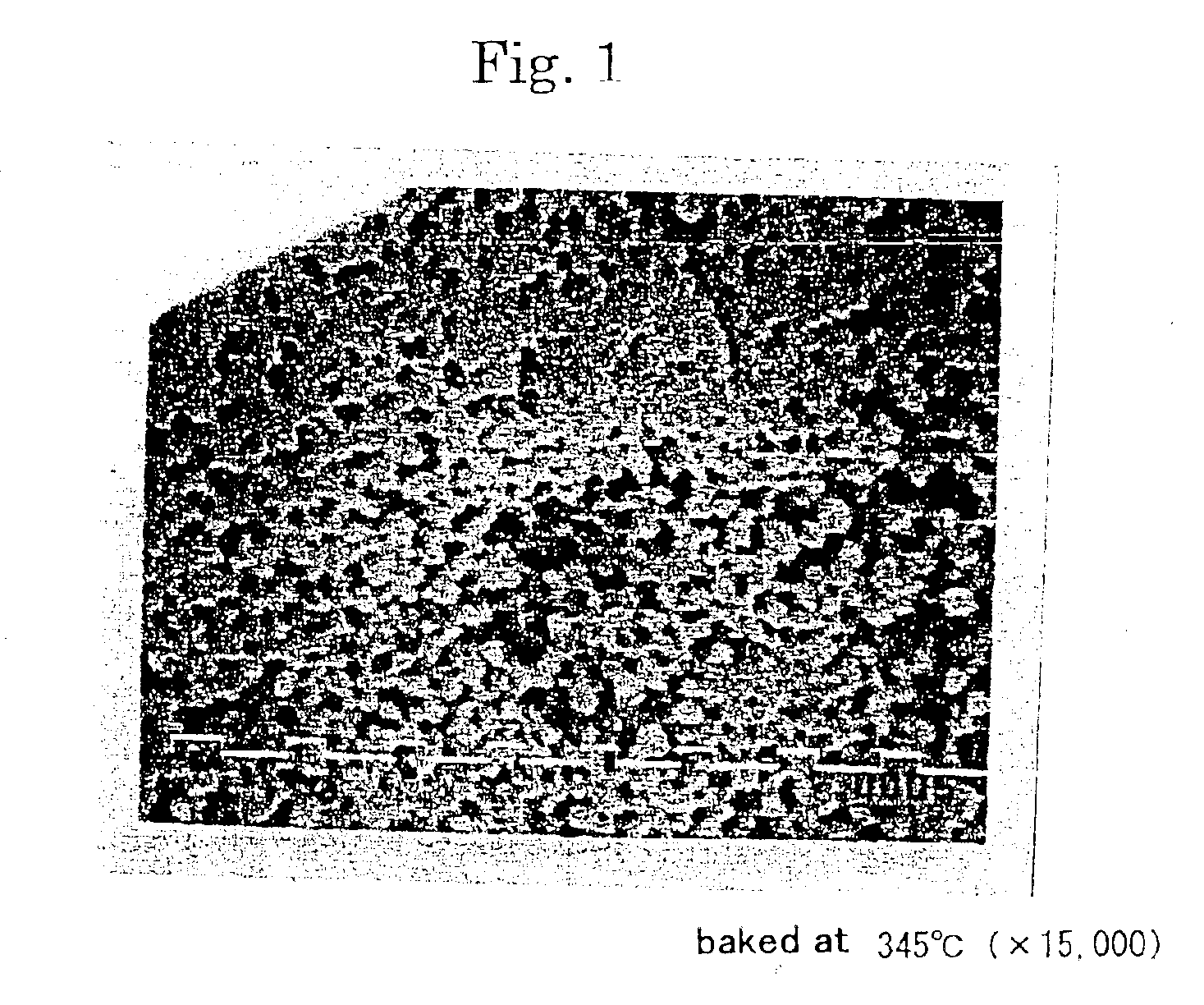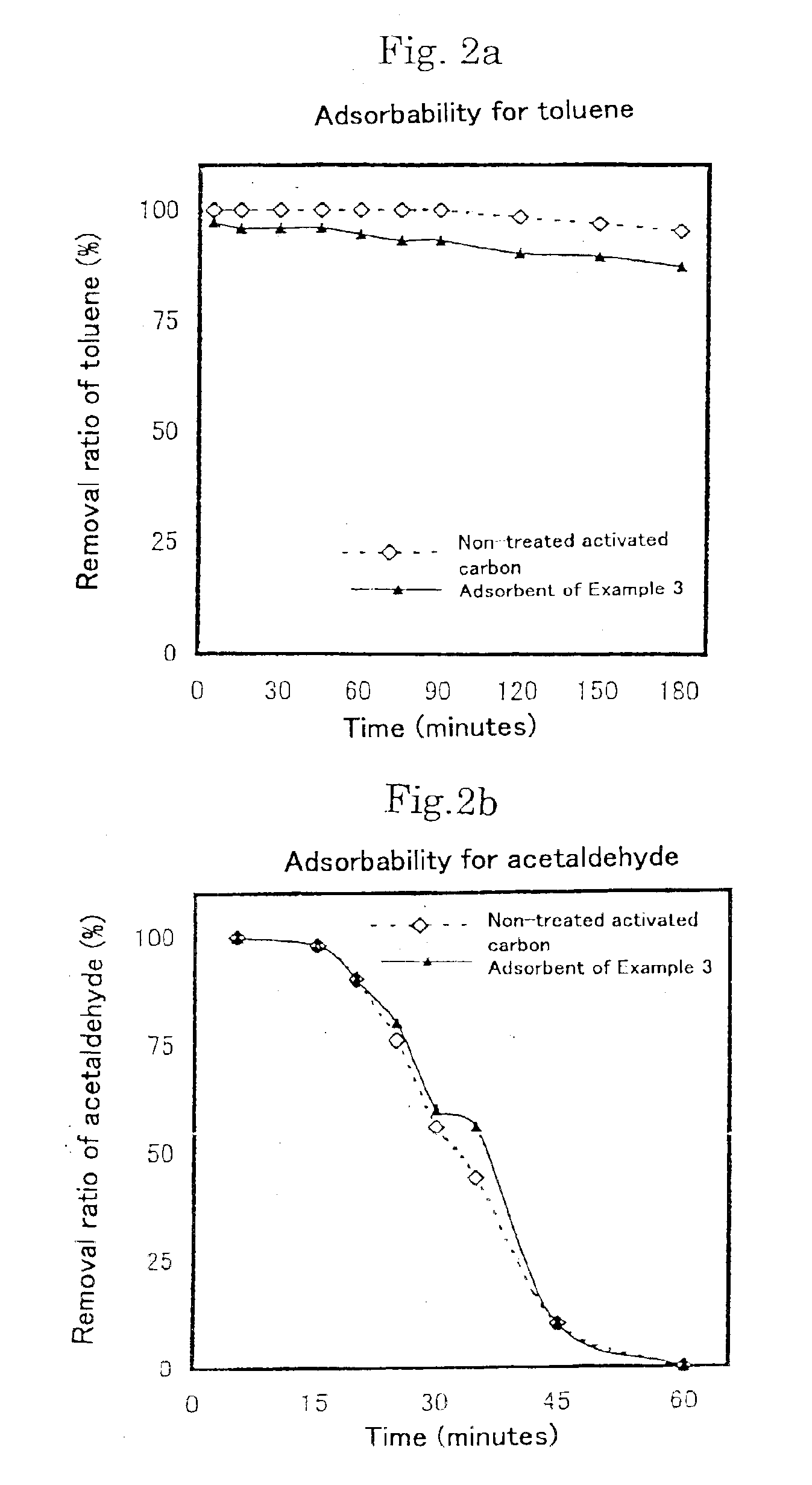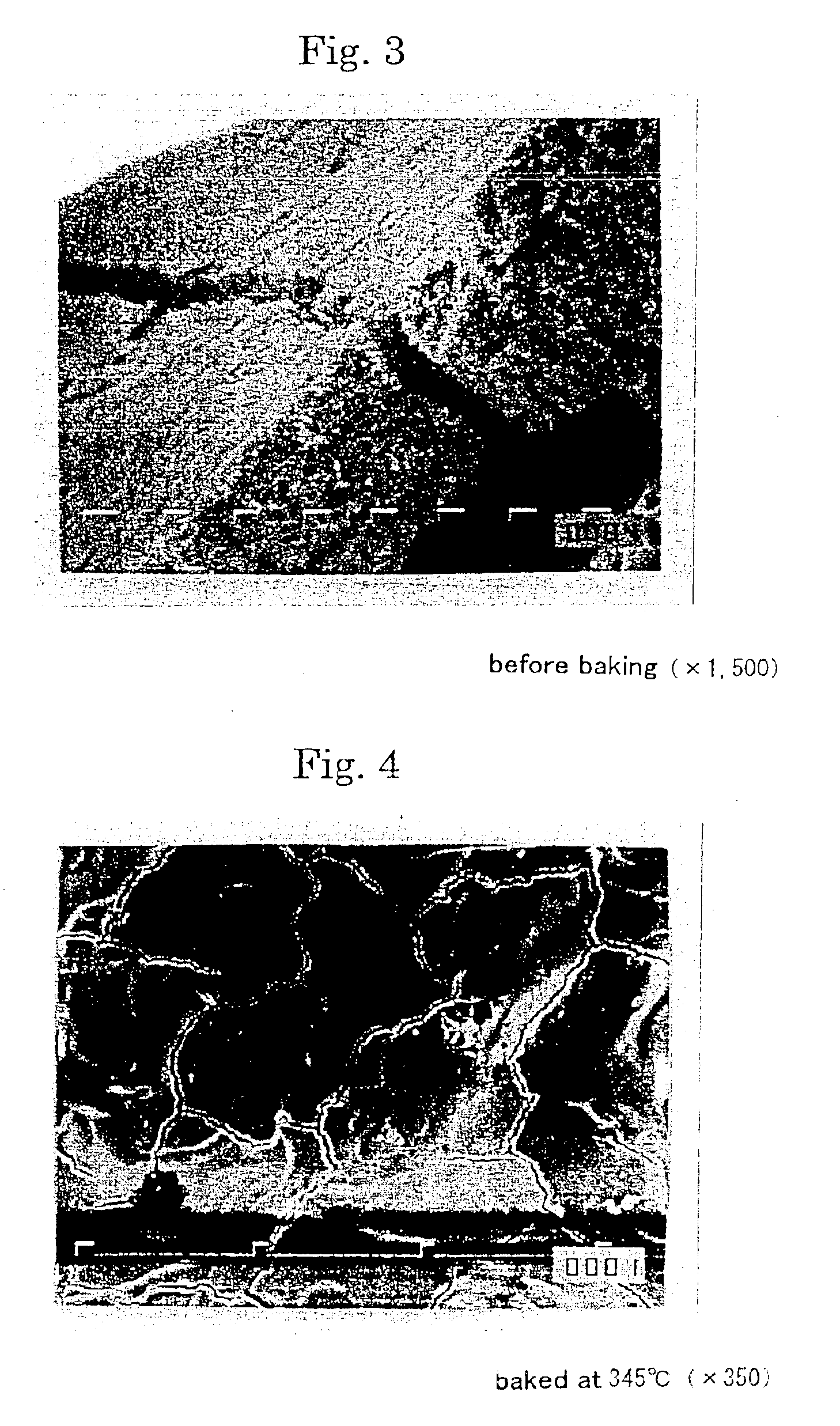Adsorbents, process for producing the same, and applications thereof
- Summary
- Abstract
- Description
- Claims
- Application Information
AI Technical Summary
Benefits of technology
Problems solved by technology
Method used
Image
Examples
example 1
[0083]A circular cylinder of a diameter of 300 mm and having a mesh having opening dimension of 0.297 mm at the bottom thereof was set standing normally. Core particles of activated carbon of between 20-mesh and 10-mesh were introduced into the circular cylinder, and thereafter dry air of 160° C. was flowed from the bottom thereof at a volumetric flow rate of 3 L / sec., to promote the convection movements of the activated carbon particles. A spray nozzle having a nozzle diameter of 2.5 mm was mounted to the central portion of the bottom mesh. A suspension containing: 6 parts by weight of polytetrafluoroethylene; 5 parts by weight of nonionic surfactant (e.g., oxy ethylene oxy propylene co-polymer and so on); and 89 parts by weight of water was sprayed to the convection-moving activated carbon from the nozzle for 0.2 second, and then the sprayed activated carbon was dried for 60 seconds. The operation was repeated for 100 times to form the coating layer having an average film thicknes...
example 2
[0088]Core particles of activated carbon of between 20-mesh and 10-mesh were immersed within water, and air trapped within the micro pores of the activated carbon particles was degassed by applying ultrasonic vibration. The activated carbon particles were recovered on a mesh, and then the particles were introduced to liquid nitrogen one by one to form a layer of water ice having layer thickness of about 10 μm on the surface of the activated carbon particles. Then, the activated carbon particles having the water ice layer thereon were immersed for 1 second within a solution comprising: 1 part by weight of polycarbonate segment thermoplastic polyurethane resin; 1 part by weight of polyvinylpyrrolidone; 1 part by weight of hydroxy methyl cellulose; and 97 parts by weight of dimethyl formaldehyde, and immediately after that, the activated carbon particles were transferred to a solution comprising 40 parts by weight of dimethyl formaldehyde and 60 parts by weight of water. It was found t...
example 3
[0091]350 g of core particles of crushed activated carbon (between 20-mesh and 14-mesh) produced from the palm shell were introduced to a powder coating machine (“MP-01”, commercially available from POWREX CORPORATION), and the activated carbon particles were convected at air feeding temperature of 60° C., air feeding flow rate of 80 m3 / hr., and revolution speed of a tri-blade bottom rotor of 300 rpm to create convectional movement.
[0092]On the other hand, a suspension of polytetrafluoroethylene resin fine powder (“POLYFRON D-1”, commercially available from DAIKIN INDUSTRIES Co., Ltd.) was diluted with distilled water to prepare a suspension containing solid contents of 20% wt. 150 g of the suspension was sprayed along the tangential direction of the rotating bottom rotor over the convecting activated carbon particles at an injection rate of 9.5 g / min. from a dual fluid nozzle having a nozzle diameter of 1.2 mm. The first coating process was completed when the exhaust temperature wa...
PUM
| Property | Measurement | Unit |
|---|---|---|
| Pore size | aaaaa | aaaaa |
| Pore size | aaaaa | aaaaa |
| Pore size | aaaaa | aaaaa |
Abstract
Description
Claims
Application Information
 Login to View More
Login to View More - R&D
- Intellectual Property
- Life Sciences
- Materials
- Tech Scout
- Unparalleled Data Quality
- Higher Quality Content
- 60% Fewer Hallucinations
Browse by: Latest US Patents, China's latest patents, Technical Efficacy Thesaurus, Application Domain, Technology Topic, Popular Technical Reports.
© 2025 PatSnap. All rights reserved.Legal|Privacy policy|Modern Slavery Act Transparency Statement|Sitemap|About US| Contact US: help@patsnap.com



